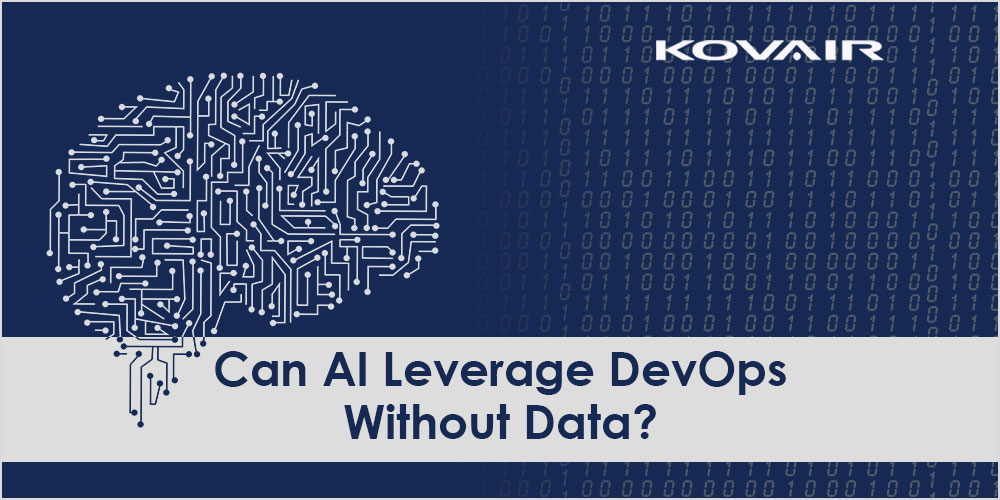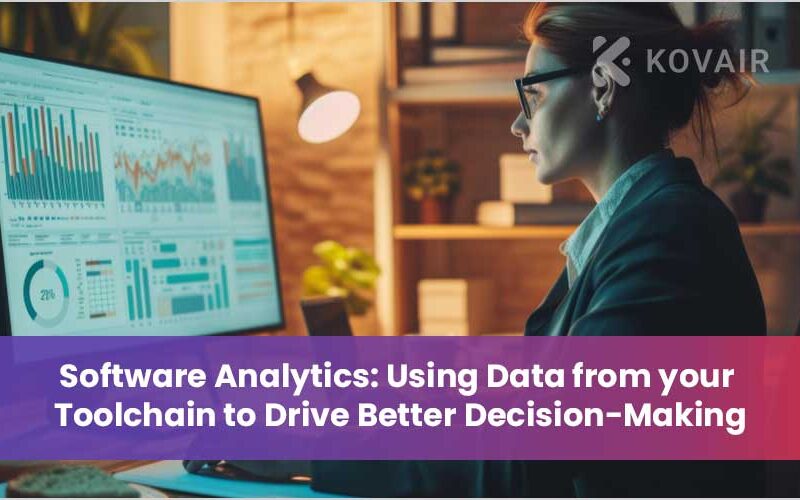
Many of you are concerned about how AI can leverage your DevOps practice. But without the right data, AI can make your DevOps practice go berserk.
AI or DevOps — everything runs on data. The difference lies in how the data is put to use in each of these cases. To begin with —
DevOps is Business Centric While Artificial Intelligence is Human Simulation
Imagine how powerful a software delivery process can turn out when both DevOps and AI are brought together in one place.
DevOps follows a set of pre-programmed rules that need to be manually defined first through workflows and validations at every step in the process. In other words, users will need to manually define the X that clears the automated system to perform the Y.
Artificial Intelligence, on the other hand, is a technology that has the ability to think, say, and do what a human can. Unlike DevOps that is just able to follow orders, AI is designed to constantly seek patterns (such as the pattern of data exchange between tools), learn from experience, and self-select appropriate responses in situations when needed.
This could be just the beginning of how software delivery could turn out to be and what opportunities await businesses adapting to AI driven DevOps.
Promising Benefits of AI that Drives DevOps
- Simplify Tool Interactions and Reduce Process Errors
With AI, the software can become adaptive to human behavior. They can easily predict an individual wants and needs and act accordingly, in the process, prioritizing on reduced human errors.
- Dissolve the gap prevailing between Humans and Technology
Even though DevOps promotes continuous integration and delivery, many organizations believe that it is AI that can provide a solution for optimizing the DevOps process. Some of the notable uses of AI in DevOps are, enabling help desk systems to process and fulfill a user request to provision a resource automatically.
Chances of IT professionals addressing a known malware event on a non-critical system and ignoring an unusual process starting on a critical server are higher. DevOps driven by AI can prioritize such threats that are identified as outside the usual behavior pattern and quickly addresses it.
- Streamlining Relevant Data to Respective Groups
AI enabled DevOps eliminates the need of manually parsing, sharing or process information. The ability to properly analyze and monitor data enables AI driven DevOps to streamline appropriate information from a large pool of data metrics to individual groups or team members.
Effective Artificial Intelligence Requires Good Quality Data
That is because an AI can only be applied using Machine Learning algorithms — a simple analytic technique that teaches computers to develop a practice of prediction out of an experience.
Through Machine Learning algorithms, one can easily trace patterns in data and generate useful insights for better decision making. This eliminates the need of having to depend only on a predetermined equation model.
Machine Learning is categorized into two types of techniques — Supervised and Unsupervised Learning. In the first case, a validation model is designed using known input and output data based on which a possible result is determined. In the case of the latter, the analysis is done based on the hidden patterns or intrinsic structures in input data.
Some of the techniques used in a supervised learning are Classification and Regression. In the case of unsupervised learning, clustering is the most common technique used to build a model.
Each of these Machine Learning Algorithms follows different approaches to learning data, which leads us to accept the fact — AI is only a part of the knowledge management system that also involves layers of IT and business data.
An Effective AI Implementation Will Therefore Require the Right Data Storage Facility
AI may enable organizations to move at lightning speed. However, many organizations may lack thorough governance for gathering trustworthy and tenable data for digestion, analysis, and interpretation. As per data reports by Forbes, Eighty percent of business executes are still concerned about the quality, speed, the volume of data that gets generated, especially storing structured semi-structured, and unstructured data.
And so, when it comes to gathering good quality data, that is something that you cannot evade now that big data really does matter a lot. You can try investing in a good central database storage facility like the Data Lake that has a flat architecture instead of a hierarchical structure for storing data, ensuring that all data are stored in its native format and not affected by any unwanted manipulation. So, begin with data first if you want to adapt to AI fast.




Well written blog. What do you think to be some preferred ways of gathering and storing the data for AI to operate?
Finding the right storage system that would store data in its unfiltered and unstructured format would appear to be the best option. However, storing data in its raw format might not be enough. The goal is to feed AI with quality data and to ensure that quality data is being stored the importance of analysis tools for classifying between good and bad data after a data has been stored will rise even higher.